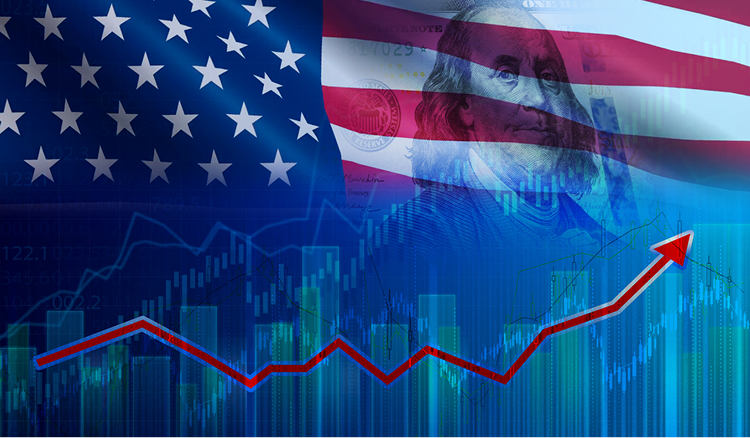Made in America
Over the last few decades, the trend among American manufacturers has been to explore outsourcing opportunities in China. They were enticed by the prospect of reduced labor costs, affordable rents, and less stringent regulations. However, a confluence of factors, including disruptions in the supply chain caused by the pandemic and broader macroeconomic issues, has compelled companies to reassess this strategy. As we previously discussed during a past call to action during the great confusion of 2020, the approach is straightforward: U.S. manufacturers should reclaim what was once theirs and bring manufacturing back to the U.S.
In this article, we will delve into the challenges presented by China to the global supply chain, provide an in-depth overview of reshoring, and underscore the paramount importance of American manufacturers "taking it back."
Why Depart from China

The contemplation of American companies leaving China stems from the various challenges they are and may encounter, which include political instability and the risk of property confiscation. Operating within China presents substantial risks, particularly in the event of a war. Let's explore specifically some of the reasons why U.S. companies should find it compelling to exit China and return home.
- Uyghur Forced Labor Prevention Act. Taking the issue of the Uyghur Forced Labor Prevention Act seriously requires a comprehensive understanding of the human rights abuses taking place in the Xinjiang region of China. This region is home to the minority Uyghur people, who are subjugated by a paramilitary organization. The production of items like neon, steel, lithium, and silica relies heavily on these subjugated people, driving down the cost of goods and manipulating economic markets. This is a clear violation of human rights, and it is not justifiable from any perspective.
- China's Strict COVID-19 Response. China's implementation of its zero-COVID policy injected unpredictability into the worldwide supply chain. Supply chains require stability, but now, it is impossible to anticipate China's future actions when it comes to COVID. Manufacturers run the risk of their warehouse operations being shut down for days. The government's authoritarian and capricious policy decisions have undermined trust in China's manufacturing.
- China and Taiwan Tensions. One of the key flashpoints in the region is the tension between China and Taiwan. China’s regular incursions into Taiwanese waterways and airspace have raised the possibility of a conflict erupting overnight, with no advanced warning. The situation is further complicated by China’s tensions with India in the Himalayas. Hand-to-hand battles between Indian troops and the Chinese military have occurred, highlighting the long-standing competition between the two countries. The potential for a massive war involving China, Taiwan, Japan, Australia, India, and the US is a real concern, with nuclear weapons adding to the instability.
The Reshoring Revolution
Reshoring is already experiencing a remarkable resurgence, with a year-over-year growth rate of 38%, as reported by the Reshoring Initiative. The shift is unfolding before our eyes and will only continue. According to Deloitte, 62% of 305 U.S. transportation and manufacturing executives have confirmed that their companies have initiated reshoring efforts. In 2022, reshoring efforts led to the creation of nearly 350,000 jobs, marking a 25% increase from the previous year.
CEOs from various industries have echoed the importance of reshoring. A plastics and rubber CEO emphasized that reshoring is not a fleeting trend but a reality, citing supply chain issues in China that have unsettled customers. Similarly, a CEO from a metal company emphasized the need for reliability and securing critical materials, necessitating a more diversified sourcing approach.
In 2023, approximately 1,800 U.S. companies are planning to reshore production. Deloitte's 'Future of Freight' report suggests that this reshoring shift could reduce the share of Asian imports to the U.S. by 40% by 2030. This trend is here to stay and is expected to grow further. You can read more about this in our blog: Survey Results: Veryable Customers Make and Source in America.
Made in America Matters
The shift of businesses returning to the U.S. or planning to do so raises the question of the benefits of this move. One compelling reason is the "Made in America" product MATTERS to people. This Reshoring Institute survey revealed three significant reasons why American-made manufacturing offsets the typically higher costs associated with reshored production:
- Consumer Preferences: Americans are willing to pay 20-25% more for American-made products, with some willing to pay an additional 50% for domestically produced goods.
- Perceived Quality: Nearly half of American customers perceive products manufactured in America as having better quality than those produced in other countries.
- Purchasing Influence: The presence of "Made in the U.S.A." on product labels influences the buying decisions of approximately 60% of Americans.
Additional Benefits
What are some other benefits of moving back stateside? The potential for cost savings is a key factor. While labor costs in the U.S. may be higher than in some overseas countries, factors like transportation and logistics costs, intellectual property protection, and quality control can offset these higher labor expenses. As a result, reshoring enhances supply chain resilience, mitigating risks associated with natural disasters, political instability, and other external factors.
Improved quality control is another critical aspect. Overseas manufacturing often presents challenges in monitoring and ensuring consistent quality standards. Bringing manufacturing back to the U.S. allows companies greater oversight, resulting in improved product consistency and reliability.
Huge Potential Economic Impact
Manufacturing stands as the bedrock of a thriving economy, a vital pillar upon which economic stability and growth are built. In the 1960s, it played a substantial role, contributing approximately 25% to the United States' Gross Domestic Product (GDP). However, recent years have witnessed a marked decline, with manufacturing now accounting for less than 12% of the GDP and only 9% of the nation's workforce engaged in this sector. Yet, the potential for a renaissance in American manufacturing remains significant.
How significant? Consider this -- if 83% of the 579,811 manufacturers in the U.S. were to onboard just one new supplier, even through a single contract, with an average value of $921,247 per contract, it would result in a potential infusion of $443 billion into the U.S. economy, as revealed in a Thomas report. Such an injection would undoubtedly invigorate the nation's economic landscape, highlighting the profound potential and significance of revitalizing the manufacturing sector.
Addressing Labor Challenges
Labor availability and cost concerns pose significant challenges to reshoring initiatives. With the U.S. unemployment rate consistently below four percent and a declining growth rate in the working-age population, efficiently managing labor resources is crucial. Enter LeanShoring, a strategic approach that enables businesses to align their labor force with demand seamlessly. LeanShoring focuses on eliminating inefficiencies within current manufacturing processes, optimizing production workflows, and mitigating risks.
To revive American manufacturing and make "Made in America" a tangible reality once more, U.S. manufacturers must expedite the adoption of Lean manufacturing best practices. This effort aims to enhance the productivity of American workers and foster a competitive environment for domestic manufacturing. Moreover, leveraging the capabilities of the Veryable platform, which has established partnerships with numerous reshoring manufacturers, allows businesses to access flexible labor to scale.
Conclusion
The resurgence of manufacturing in the United States is driven by a multitude of factors, including concerns regarding human rights, disruptions within the global supply chain, geopolitical tensions, and the imperative for economic stability. While reshoring initiatives may demand time and investment, the potential benefits for the U.S. economy, job market, and global supply chain resilience are monumental. It is time to reclaim American manufacturing and, with the support of Veryable, strengthen the United States' position in the global market, striving for a more equitable future for all. With the right mindset and concrete steps, we can exert a positive influence on the world and shape a brighter future for everyone.
Previous Posts
How On Demand Labor Helps Manufacturers Maintain World Class Quality When Demand Refuses to Sit Still
The Future of Manufacturing and Logistics
Create a free business profile today to explore our platform.






